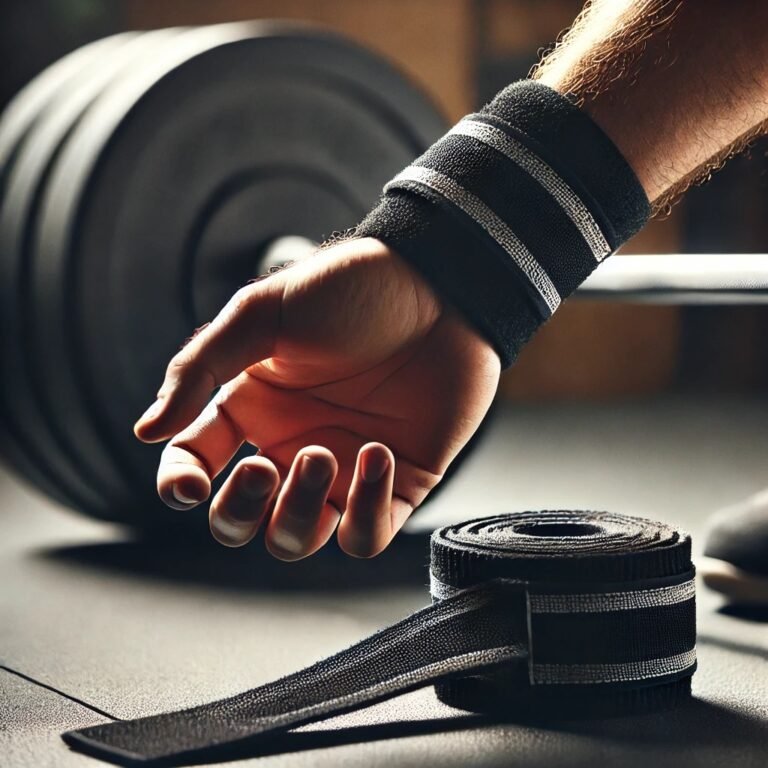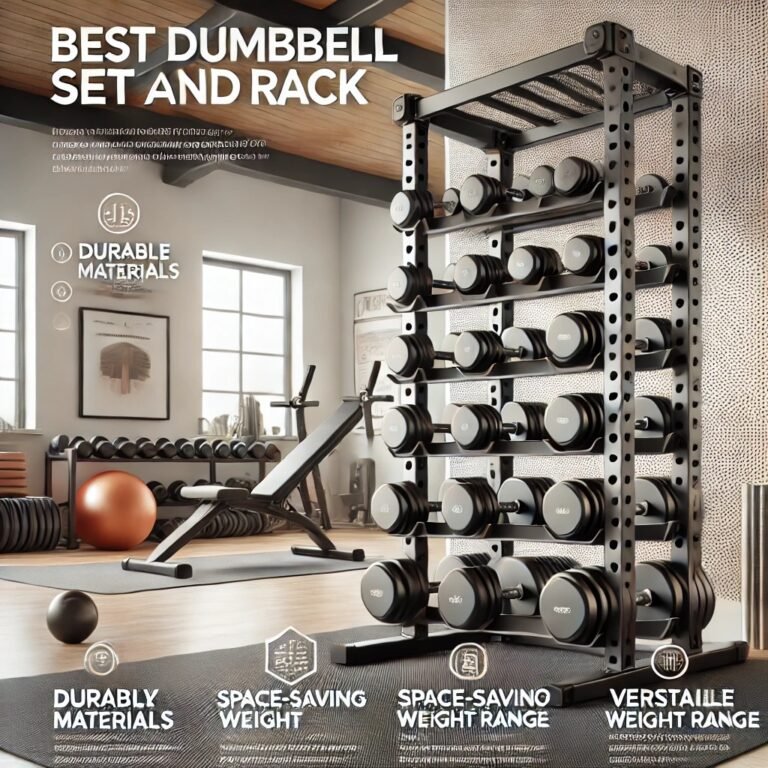Learning how to put on wrist wraps correctly can make a big difference in your performance and safety during strength training and weightlifting. Wrist wraps are designed to provide essential support, especially when lifting heavy weights or doing repetitive movements that strain the wrists. However, many people overlook the importance of applying them properly, which can lead to discomfort or even injury. In this guide, we’ll walk you through the steps to put on wrist wraps the right way, explain when to use them, and highlight common mistakes to avoid so you can get the most out of your workouts.
Table of Contents
What Are Wrist Wraps and Why Use Them?
Wrist wraps are a popular piece of supportive equipment used by athletes, particularly in weightlifting, powerlifting, CrossFit, and strength training. They are designed to provide stability and protection to the wrist joint during heavy or repetitive lifts, such as bench presses, overhead presses, or clean and jerks.

The primary purpose of wrist wraps is to reduce the strain on the wrists by keeping them aligned and stable under pressure, which helps prevent injuries like sprains, strains, or overextension. By adding extra support to the wrist joint, wrist wraps can also help improve performance by allowing athletes to lift heavier weights with more confidence. Whether you’re lifting at the gym or training for a competition, wrist wraps can be an essential tool for enhancing both safety and strength.
Learn how to put on wrist wraps in more detail here
Step-by-Step Guide: How to Properly Put On Wrist Wraps
Putting on wrist wraps correctly is essential for getting the right support and protection during your workouts. Here’s a simple, step-by-step guide to help you put them on like a pro:
1.Unroll the Wrap: Start by fully unrolling the wrist wrap. Make sure the thumb loop is exposed and the Velcro is on the outside.
2.Slide Your Thumb Through the Loop: Place your thumb through the thumb loop. This will help anchor the wrap as you begin wrapping it around your wrist.
3.Wrap Around the Wrist: Begin wrapping the material around the wrist. Start by covering the wrist joint, ensuring that the wrap sits snugly just above the wrist bones. The first wrap should be firm, but not overly tight.
4.Adjust for Tension: As you continue wrapping, make sure each layer is evenly applied, slightly overlapping the previous one. You can adjust the tension by pulling more tightly for added support or loosening up if it feels too restrictive.
5.Focus on Wrist Support: Keep wrapping until you’ve covered your wrist with enough layers to feel secure. Avoid wrapping too high up your forearm, as the goal is to stabilize the wrist joint itself.
6.Secure with Velcro: Once you’ve finished wrapping, fasten the Velcro strip tightly to secure the wrap in place. Ensure the wrap doesn’t slide or feel loose during your movement.
7.Remove the Thumb Loop (Optional): Some people prefer to remove the thumb loop after wrapping, especially during lifts, for added comfort and flexibility. You can do this by simply pulling your thumb out of the loop, leaving the wrap securely in place.
By following these steps, you’ll ensure that your wrist wraps are snug and supportive, helping you lift heavier weights with greater stability and reduced risk of injury.
When Should You Use Wrist Wraps?
Wrist wraps are most beneficial when performing exercises that place significant stress on the wrists, especially during heavy lifting or pressing movements. If you’re engaging in activities that require your wrists to bear a lot of weight or maintain stability, wrist wraps can provide essential support.

Here are some key scenarios when you should consider using wrist wraps:
Heavy Lifting: When lifting weights that challenge your maximum strength, such as during squats, deadlifts, or clean and jerks, wrist wraps can help stabilize your wrists and reduce strain. This extra support is crucial when handling heavy loads that could otherwise compromise your wrist joints.
Pressing Movements: Exercises like bench presses, overhead presses, and shoulder presses place a lot of pressure on your wrists, especially when lifting heavy weights. Wrist wraps can help maintain proper alignment, preventing your wrists from bending backward and reducing the risk of injury.
Olympic Weightlifting and CrossFit: In sports like Olympic weightlifting or CrossFit, where dynamic movements like snatches and jerks are common, wrist wraps provide added stability, allowing you to focus on technique without worrying about wrist strain.
Repetitive Stress: Even during moderate lifting sessions, repetitive movements can put strain on your wrists over time. Wrist wraps can help protect against overuse injuries during exercises like push-ups, dips, or handstands, where the wrists repeatedly bear your body weight.
Injury Prevention and Recovery: If you’re recovering from a wrist injury or experience occasional wrist pain, wraps can help provide additional support during lifting sessions, allowing you to continue training while minimizing discomfort.
In these scenarios, wrist wraps can enhance your performance, reduce the risk of injury, and improve overall stability, making them a valuable tool for anyone serious about strength training.
Learn about all the different types of wrist wraps and how to use there here
How Tight Should Wrist Wraps Be?
Finding the right balance between support and comfort is key when tightening wrist wraps. The goal is to make the wraps snug enough to stabilize your wrists, but not so tight that they cut off circulation or limit your movement.
Here’s how to gauge the proper tightness:
- Firm, Not Restrictive: Wrist wraps should feel firm and secure around your wrist, offering support without causing discomfort. You want to feel like your wrists are stabilized, particularly during heavy or pressing movements, but you should still be able to move your hands and fingers comfortably.
- Check for Circulation: After applying the wraps, check that you’re not losing circulation in your hands or fingers. If your hands start feeling numb or turning a different color, the wraps are too tight and need to be loosened. Proper blood flow is essential for both safety and performance.
- Adjust Based on Exercise: Depending on the exercise, you might want to adjust how tight the wraps are. For example, when performing heavy lifts like bench presses or overhead presses, a tighter wrap can provide extra wrist stability. However, during lighter sets or high-repetition exercises, you may want to loosen the wraps slightly for more comfort and flexibility.
- Test for Flexibility: While the wraps should limit excessive wrist bending, they shouldn’t completely restrict movement. You should still be able to bend your wrist slightly when needed for proper lifting technique. A wrap that’s too tight might interfere with your form or cause unnecessary tension in your wrist and forearm.
In summary, wrist wraps should be tight enough to support your wrist joints during demanding lifts, but they shouldn’t feel constricting. Make sure you can move your hands and wrists without discomfort while still enjoying the extra stability the wraps provide. Adjust the tension as needed to fit the specific demands of your workout.
Check out our guide on How to use wrist wraps the correct way
Common Mistakes to Avoid When Using Wrist Wraps
Wrist wraps are an excellent tool for improving wrist support, but using them incorrectly can limit their effectiveness and even lead to discomfort or injury. Here are some common mistakes people make and how to avoid them for optimal performance and safety:
Wrapping Too High or Too Low: One of the most frequent errors is placing the wraps either too far up the forearm or too close to the hand. For proper support, the wrap should cover the wrist joint itself, just above the wrist bones. Wrapping too high reduces support for the wrist, while wrapping too low can limit hand movement.
Over-Tightening the Wraps: While it’s important for the wraps to be snug, many users make the mistake of wrapping them too tightly. Over-tightening can cut off circulation, causing numbness or discomfort in the hand and fingers. Aim for a balance—tight enough to provide stability but loose enough to allow blood flow and mobility.
Not Securing the Wraps Properly: If the Velcro is not fastened securely, the wraps can loosen during your workout, compromising their support. Make sure the Velcro strip is tightly secured so the wraps stay in place throughout your exercise session.
Using Wraps for Every Exercise: Another mistake is wearing wrist wraps during every part of your workout, even for exercises that don’t place stress on your wrists. Wrist wraps should be used strategically, primarily for heavy lifts or pressing movements. Over-relying on them can reduce your wrist’s natural strength over time.
Not Replacing Worn-Out Wraps: Like any piece of workout gear, wrist wraps can wear down over time. Using worn-out wraps with stretched fabric or weak Velcro can decrease their effectiveness. Regularly inspect your wraps and replace them if they’ve lost their elasticity or grip.
Conclusion
Wrist wraps are an essential tool for anyone engaging in heavy lifting, pressing movements, or exercises that place stress on the wrists. Knowing how to use them correctly can significantly improve your performance, protect your wrists from injury, and help you lift with confidence. By understanding when to use them, how to put them on properly, and avoiding common mistakes, you can maximize the benefits wrist wraps offer. Remember to always prioritize technique and wrist health in your training, and you’ll set yourself up for long-term success in the gym. If you’re looking for more information on choosing the right wrist wraps, be sure to check out our guide on selecting the best wraps for your needs.






2 Comments
Comments are closed.